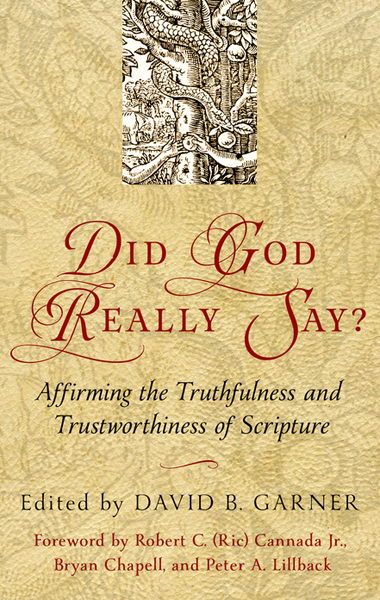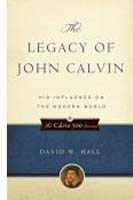
We love lessons. As parents we wait for and even seek out teaching moments. But even more specifically, we love distilled instruction. We want the ideas boiled down. Give us three easy points and we are happy. You want proof for this mindset? Check out the endless series of books for Dummies and Idiots on virtually any subject. We want the facts and just the facts. Now, if you think I’m balking at the idea of lessons and teaching moments then you’re heading toward country I don’t plan to visit. But if these shoes aren’t made for walking in that direction, then to which road am I headed.
Well, I have become persuaded that the problem is not that we like three easy lessons or distilled ideas though they are not without their pitfalls. The problem is that we don’t know where to find books that teach the best lessons. There are various reasons for this and I’m not interested in enumerating them at the moment. Instead I am eager to tell you about one of the finest of books which has the best lessons. It is John Bunyan’s allegory on the Christian life called, The Pilgrim’s Progress.
Structural Elements
Both parts of this little book – yes, it has two parts and as one of my elders once said, “Part two makes it covenantal!” – are chocked full of lessons. But today there is a specific section of Christian’s journey I want to think about with you. So, if you have a copy of Bunyan’s wonderful tale then grab it from your shelf and meet me back here in a couple of minutes – you bring the coffee!
Okay, if you have it, open to the place where Christian arrives at the wicket-gate – it’s just after Christian is rescued from the dire consequences of following the counsel of Mr. Worldly-Wise Man.1 I want you to notice that just after entering the wicket-gate but before arriving at the Place of Deliverance (the cross of Christ) Christian makes a stop at the Interpreter’s House. While at this house Christian learns seven vital lessons that will be profitable throughout his journey to the Celestial City.
However, before going further let me break for a question you may have. If the wicket-gate is the gospel, then why doesn’t Christian lose the burden of sin on his back until he reaches the cross which is after the Interpreter’s House? That is a good question and lovers of The Pilgrim’s Progress having been discussing it for a long time. Now, I am not a Bunyan scholar but here is my take. I am of the mind that if Bunyan were writing a systematic theology his ordo salutis or his order of salvation would have been constructed a bit different. However, as he attempts to relate experience through allegory his ordo docendi or the order of his teaching is what it is. But no matter how we handle this issue our point is left secure; Christian is learning early lessons which will serve him throughout his earthly pilgrimage.
I’m sure at this point you would like to get to the lessons but bear with me because before we get to the things that Christian learned there is something we ought to notice about how they are presented. Whether in Bunyan’s mind this was intentional or not the section on the Interpreter’s House is bookended or roped off or bounded by the exact sentence on either side. Before and after his visit Bunyan writes, “Then Christian began to gird up his loins, and to address himself to the journey” (Bunyan, 2008, 31, 39). That repetition is like a New Testament inclusio which is a literary device used to bracket material.
Again, whether or not Bunyan intended such a thing is open to debate. However, there is something else in the text which makes me think that this bookending was intentional. Upon his arrival Christian tells the Interpreter that he was “to call here for my profit” and when leaving Christian again says that he has seen things “rare and profitable.” The point seems to be very simple and direct. At the Interpreter’s House, if we pay careful attention, we will carry away profitable treasures for the journey. It appears that Bunyan wanted to highlight the Interpreter’s house.
Now, before getting to those lessons I have a piece of advice for you. I’ll make it brief because I’m going to return to it later. If you are reading through the first part of The Pilgrim’s Progress then get a small slip of paper and write these teachings down and use it as a book mark because if you read attentively you will see how these lessons help Christian navigate the believing life. And if the instruction Christian received from the Interpreter helped him, then it can help us. Our spiritual progenitors understood this. And knowing that The Pilgrim’s Progress was a staple in their spiritual diet it is little wonder that these saints several hundred years ago became giants of the Faith. They had committed these lessons to heart and life. So, with that in mind, let’s enter the house of the Interpreter!
Seven Lessons
The lessons Christian learns are not simply for him. It is true that Christian’s journey is truly his journey and Bunyan recognized that every believer has his own strengths, weaknesses, and temptations. For example, unlike Christian, Faithful had met Wanton and Adam the First along his journey. Nevertheless, the truths that will fortify us along the way remain constant, which is why in part two of The Pilgrim’s Progress the Interpreter showed Christiana the same seven lessons as well as additional ones. These lessons help us to stand. Here they are:
- As Christian enters the house he is shown a portrait of a man who is described as “very grave.” According to the Interpreter, this grave man is a pastor and “He is the only man, whom the Lord of the place whither thou art going hath authorized to be thy guide…” (32-33).
- The second lesson is learned watching a man sweeping who is only able to stir up dust until water is brought to sprinkle the room. The lesson is that the law has no power to subdue our sin. Only the gospel of grace applied through faith can reign over our corruption.
- After watching two children named Passion and Patience interact with one another and with earthly treasures Christian learns that it is best to wait contentedly for the best things in the next life.
- The fourth lesson is a dual lesson. Not only does Christian learn that the Devil continually seeks to devour the pilgrim but also that Christ is the One who maintains the good work that is begun in the heart of a believer.
- The fifth lesson comes to Christian while watching a valiant man fight his way through wicked men in order to attain entrance to a beautiful palace. The lesson is not explained but Christian says, “I think verily I know the meaning of this.” Perhaps a study of Matthew 11:12 will help us to do the same.
- The sixth lesson is in some ways the most troubling. Christian speaks to a caged man who is in great despair because the man no longer believes that the Lord of the land is gracious toward him. To this the Interpreter says, “Let this man’s misery be remembered by thee, and be an everlasting caution to thee.”
- The last lesson comes in the form of a man roused from sleep by a dream of the final judgment for which he was not ready.
With these lessons conjuring both hope and fear in Christian, the pilgrim once again girds up his loins to address himself to the journey but not before the Interpreter encourages him to keep these lessons as “a goad in thy sides, to prick thee forward in the way thou must go” (39). Now, that, my friends, is a hint. We will encounter situations which require these lessons to be applied as ointment to spiritual maladies if Christian is to successfully find his way to the Celestial City.
Lessons Applied
Let me give two examples. First, do you remember the portrait of the man described as “very grave?” He is a pastor and, according to Bunyan, the only man that the Lord has authorized to be Christian’s guide. We have seen this man before and we will encounter him again in the story. For instance, think back to Good-Will who stands at the Wicket-Gate. How is he portrayed? The man is depicted as a “grave person” (29). And do you remember how Evangelist is described? He has “a severe and dreadful countenance” (23). The point is that Christian has encountered this guide before and he will meet him again because he must!
The second example that Bunyan will need along the way is the lesson of the man in the cage. For this example we need to think far ahead in the story. After becoming discouraged with the narrow path Christian suggests to Faithful, his traveling companion, that they leave the narrow way and take what seems to be the easier route through By-Path Meadow. However, this turns out to be disastrous. Not long after departing from the way they are abducted by Giant Despair and thrown into the dungeon of Doubting Castle. Christian finds himself in a cage of despair and doubt. He even contemplates ending his own life (119).
Now, think back to the Interpreters house. Do you remember what Christian said after the Interpreter showed him the man in the cage of his own despair? He said, “[this] is fearful; God help me to watch and be sober; and to pray, that I may shun the cause of this man’s misery” (38). With that in mind think again of Christian in his cage of despair and doubt. It was on Sunday a little before daybreak (notice the resurrection imagery) that Christian discovered himself thrilled with excitement. Why? I’ll let him tell us.
Christian said, “What a fool am I, thus to lie in a stinking Dungeon when I may as well walk at liberty? I have a key in my bosom, called Promise, that will (I am persuaded) open any Lock in Doubting-Castle.” How wonderful! Christian recognizes that liberty from doubt and despair lay near to any believer. But the question is how did this all come about? Notice the line just before Sunday’s liberating thought. It reads, “Well, on Saturday about midnight they began to pray and continued in prayer till almost break of day” (121). Christian had learned his lessons well from the Interpreter.
Do you see why I told you to make a bookmark of these lessons from the Interpreters House? They are a help not only to understanding the book – but they are a help to every pilgrim. They are Scriptural lessons discerned and applied. Now, what are you waiting for? Gird up your loins and address yourself to the journey!
1 I will be referencing page numbers in the Penguin Classic edition of Bunyan’s The Pilgrim’s Progress with introduction and notes by Robert Pooley (London, Penguin Books, 2008).

The Alliance of Confessing Evangelicals is member supported and operates only by your faithful support. Thank you.















 © Alliance of Confessing Evangelicals
© Alliance of Confessing Evangelicals


